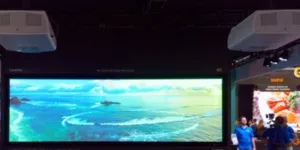Canon was showing a special system for dome projection that included both a PC (where the geometric calculations were performed) and a 46″ dome screen. The image was being projected by a WUX500ST projector and staff told us that the system cost (PC + dome) was around $16,000. The company also has a 69″ dome available. The dome supplier is Zaxel which provides the software as part of its zDome Uni offering for simulators, VR applications and gaming without the need for goggles.
3D content to be used on the dome can come from content engines such as Unity and Unreal. The company sees applications in areas such as education where a shared dome may be more practical than getting groups to use goggles.
There were no completely new projectors on the booth, the most recent being the DLP-based LX-MU500Z (Canon LP Projector Uses DLP)
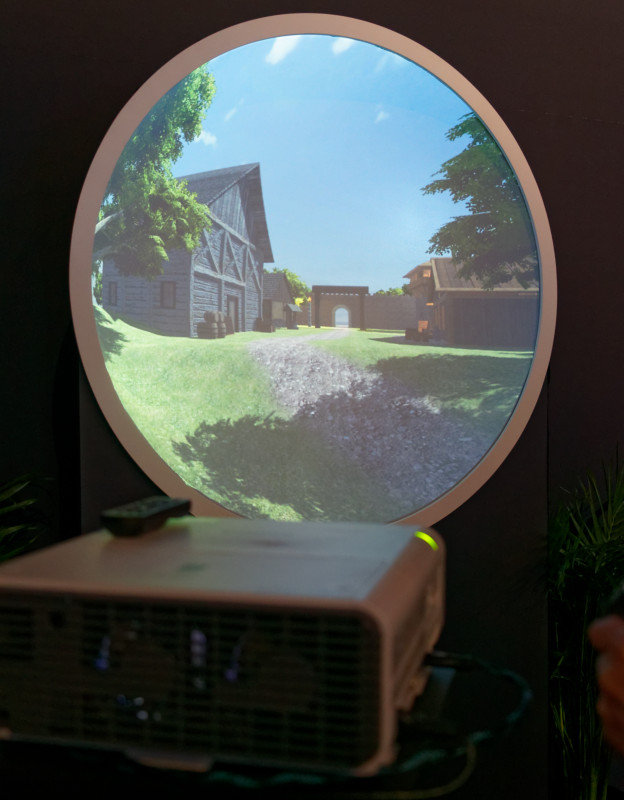 Canon showed this dome application created with Zaxel. Image:Meko
Canon showed this dome application created with Zaxel. Image:Meko
Casio was at the show and told us that the XJ-L8300HN laser phosphor projector, previewed at last year’s event and Casio’s first UltraHD projector, is now shipping. The firm was showing two projectors in a blended configuration. It also had a new Navitar NuView 574MCZ087 zoom lens with 132-220mm focal length and aperture of F3.0. It is intended for use with 0.66″ DLP engines and is compatible with the XJ-L8300HN.
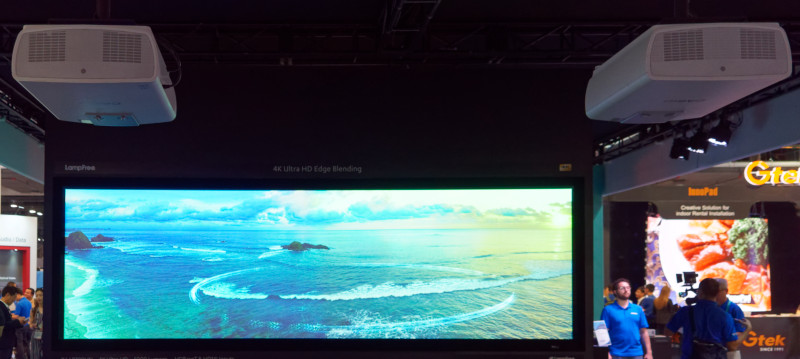 Casio was showing its XJ-L8300HN laser phosphor projector with blending. Image:Meko
Casio was showing its XJ-L8300HN laser phosphor projector with blending. Image:Meko
Dell was at the show to promote its collaboration, projection and monitor products. It had the 86″ touch display, the C8618QT, that was shown at ISE. It was also showing how its UltraHD UST projectors can be used in multiples by exploiting the integrated blend technology.
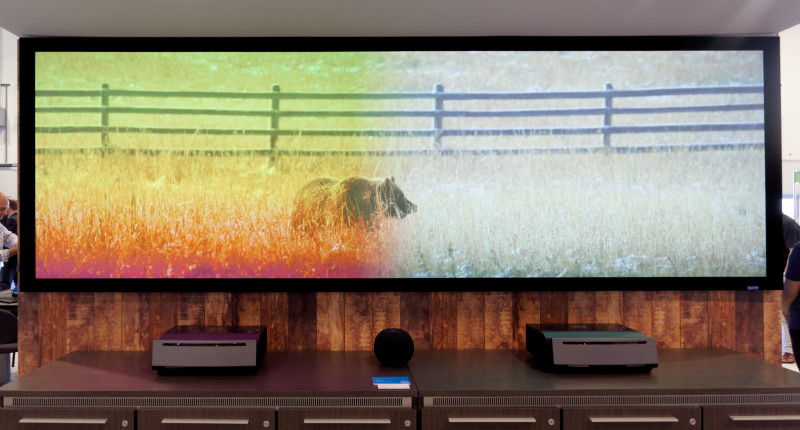 Dell was showing how its UST projectors can be blended. Image:Meko
Dell was showing how its UST projectors can be blended. Image:Meko
Epson was showing the L12000Q, shown at ISE along with its other projectors and had an impressive set-up although there was little new hardware. The company also had the Pro L20000U that was launched in Amsterdam. Epson was emphasising that its latest systems use sealed optics with liquid cooling to make the units very robust in dirty environments and more suitable for rental and staging.
There was quite a lot of emphasis on the LightScene EV-100 units which are the projectors that look like luminaires. Epson told us that has included some edge blending which allows multiple projectors to be used together to create larger images.
 Epson’s booth was heavily based on L/P projectors. Image:Meko
Epson’s booth was heavily based on L/P projectors. Image:Meko
Optoma was showing its 500 series of WUXGA and FullHD DLP projectors which have laser phosphor light sources. There are four models based on the two resolutions and with regular or UST lenses. The ZU500TST-W is the short throw version (0.79:1) and has 5,000 Ansi lumens with 1920 x 1200 resolution. The projector has four corner geometry correction and integrated HDBaseT. The UST version will cost $3,999 while the regular zoom version (1.6:1 zoom) costs $3,000. The ZE500T and ZU500T will cost $2,499 and $3,199, respectively.
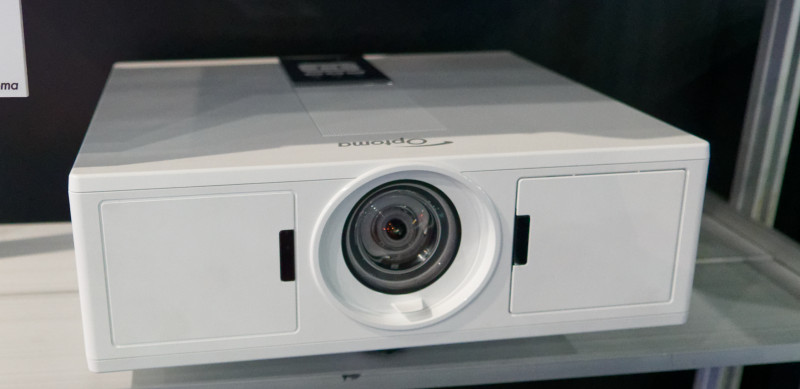 Optoma has four new models of competitively-priced L/P projectors. Image:Meko
Optoma has four new models of competitively-priced L/P projectors. Image:Meko
The company was showing its installation projector, the ZU1050 which it has been showing since ISE and the ZH420UST which has integrated blend and warping using integrated cameras. (Optoma UST Projector has Integrated Blend and Warping).
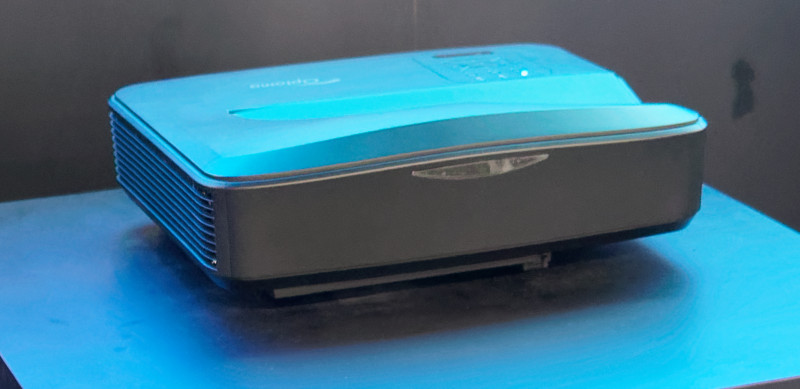 The ZK1050 is an UltraHD projector that produces 10,000 lumens and was being shown as a prototype.
The ZK1050 is an UltraHD projector that produces 10,000 lumens and was being shown as a prototype.
 The ZK1050 is a 10,000 lumen projector. Sorry, the image is not particularly sharp. Image:Meko
The ZK1050 is a 10,000 lumen projector. Sorry, the image is not particularly sharp. Image:Meko
Optoma has bought Calibre of the UK, which makes scalers and the company was promoting the PS300T which supports UltraHD and has 0.25 seconds input switching and has HDMI and HDBaseT outputs.
The PCT101 is a PCap touch projection screen of 101″. It was being shown with the ZH420UST. The screen can be attached by magnets and will be available for around $1,500 and will ship from August. The touch screen uses USB and is a standard HMI device, so no special driver is needed.
 The Optoma PCap touch projection screen is ideally used with UST projectors. Image:Meko
The Optoma PCap touch projection screen is ideally used with UST projectors. Image:Meko
Scalable is a name that is often mentioned by companies that support warping and blending, so we checked what the company was doing at Infocomm. The firm was showing how it can use a variety of cameras from Canon DSLRs to webcams to set up a wide range of configurations and optimise blending of multiple displays. The company can deal with faceted or smooth surfaces.
Scalable provides software-only solutions and supplies under its own brand or through OEMs.
TI had a private meeting room to talk to customers, but was not talking to the press. However, we heard from a TI customer that the firm has been talking about a smaller version of the FullHD chipset which could get down to as small as 0.2″ diagonal – the size currently used for pico projection.

